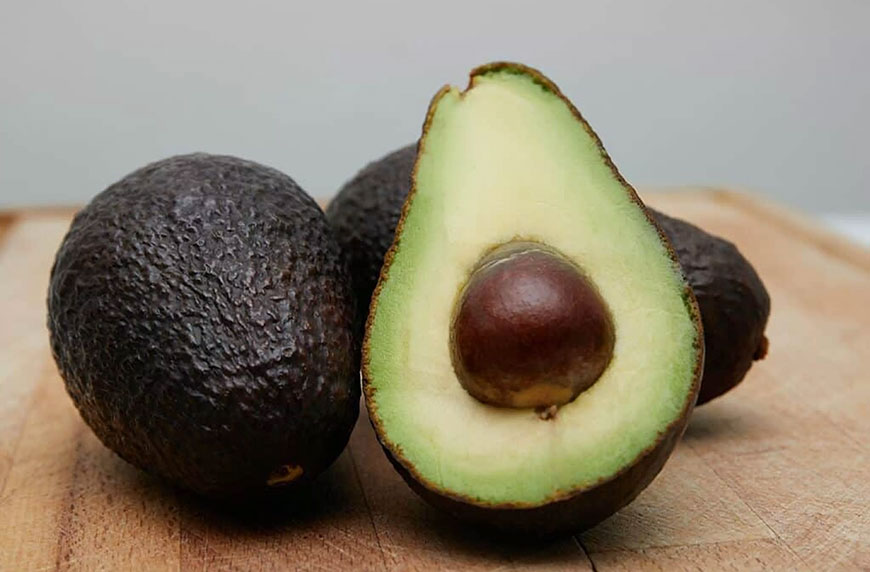2022 Dirty Dozen and Clean 15 List for Shopping
Use this guide for the 2022 Dirty Dozen and Clean Fifteen lists the next time you're grocery shopping to ensure you're buying quality produce.

Published
Buying produce can be a hassle. From knowing which fruits and vegetables are in season to buying only what you need to reduce food waste, having a guide to help you grocery shop for the planet can be super helpful.
In addition to ditching plastic whenever possible and buying plant-based foods, it's also becoming increasingly important to buy organic produce to eliminate the use of pesticides that have a negative impact on the environment. That's where the Environmental Working Group (EWG)'s 2022 Dirty Dozen list comes in.
To help you navigate the produce aisles in your local supermarket, EWG releases an annual Shopper's Guide to Pesticides in Produce. The guide includes 12 types of produce that contain the most pesticides, so shoppers know to swap them for an organic option. The guide also contains the "Clean Fifteen"—15 items that contain the least amount of pesticides.
According to EWG, over 70% of the non-organic produce sold in the U.S. "contains residues of potentially harmful pesticides." And this year's guide uses data from the U.S. Department of Agriculture (USDA) to determine which produce items are the most pesticide-intensive. Here's the rundown of this year's Dirty Dozen and Clean Fifteen lists.
Which Fruits and Veggies Are on the Dirty Dozen List?

The items on the Dirty Dozen list may surprise you. The top items on this list, containing the most pesticides, are strawberries, spinach, kale, and collard/mustard greens. According to EWG, over 90% of samples of strawberries, apples, cherries, spinach, nectarines, and grapes tested positive—meaning they contained residue of two or more pesticides.
Additionally, 103 pesticides were detected in kale, collard, and mustard greens. And 101 were found in hot and bell peppers.
Full 'Dirty Dozen' List:
- Strawberries
- Spinach
- Kale, collard, mustard greens
- Nectarines
- Apples
- Grapes
- Bell and hot peppers
- Cherries
- Peaches
- Pears
- Tomatoes
What's on the Clean Fifteen List?

If you're a little disappointed to see some of your favorite foods on the Dirty Dozen list, have no fear. The Clean Fifteen is here to save the day. These 15 items have the lowest quantities of pesticide use, according to EWG's analysis of USDA data.
Coming out at number one are avocados! According to EWG, both avocados and sweet corn are on the top of this list: Less than 2% of these samples contained detectable pesticides.
Additionally, less than 5% of the produce on this list contained residue of two or more pesticides. And nearly 70% of these 15 fruits and veggies contained no pesticide residues. Looks like you might want to add more of the Clean Fifteen to your grocery list.
Full 'Clean Fifteen' List:
- Avocados
- Sweet corn
- Pineapple
- Onions
- Papaya
- Sweet peas (frozen)
- Asparagus
- Honeydew melon
- Kiwi
- Cabbage
- Mushrooms
- Cantaloupe
- Mangoes
- Watermelon
- Sweet Potatoes
How to Use the Shopper’s Guide to Buying Produce

If you're going to buy fruits and vegetables that are on the Dirty Dozen list, it's crucial to look for organic labels. Opting for produce is better for us and the planet: A USDA Organic label ensures crops are grown on soil that doesn't contain synthetic fertilizers and pesticides applied for three years before harvesting.
Buying produce with organic certifications is a way for consumers to vote with our dollars. It tells industries we demand organic produce—not produce that's grown with harmful toxins.
You can also opt for more of the items on the Clean Fifteen instead. If you can't find organic versions of the items on the Dirty Dozen, choose the cleaner fruits and veggies. Doing so is another way to be a conscious consumer at the grocery store.
Plus, you can even shop for your produce locally to support small businesses and put your money back into the community. It's almost farmers' market season, after all.

10 Creative Ways to Use Food Scraps and Reduce Kitchen Waste
Don't toss food scraps in the trash. Instead, get creative in the kitchen with these ideas that turn food waste into delicious recipes.

7 Slowest Animals in the World
The slowest animal in the world might surprise you. These animals inhabit different climates and ecosystems, from rainforests to oceans.

7 Sustainable Denim Shorts to Shop in 2022
These sustainable shorts are eco-friendly, ethically made, and ready to be worn all season long. Here are our top picks.

